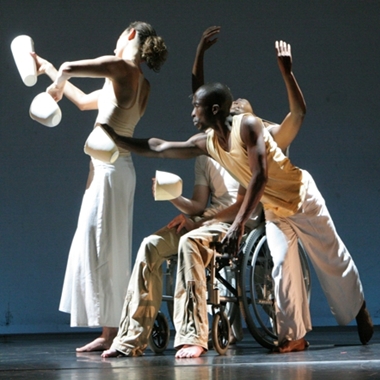

Exploring the basis of shared creativity and the role of flow experience in dance improvisation practice.
This project explores the shared creative process and the particular role of flow experience in group dance improvisation, as an example of creative practice in contemporary dance. It proposes an interdisciplinary, multiple perspective approach to the phenomenon, drawing on dance practice and being informed by qualitative, quantitative and physiological methods of experimental psychology.
Improvisation as an artistic practice emphasises real-time decision making and collaborative skills in a creative act. Within contemporary dance, it is often a vital practice of the performance itself and part of the creative process, allowing and enabling dancers to explore movement beyond their habitual patterns. In this thesis, dance improvisation serves as a laboratory for group creativity research, which allows observation of dancers’ creative processes, as well as the group dynamics of their collaboration, while they happened.
The specific interest in flow experience came from dance practice informed observations. Dancers, when reflecting on their creative process, in particular, improvisation, frequently refer to the experience of ‘being in the flow’. They describe this experience as being fully absorbed with dancing and not being disrupted by any unnecessary thoughts. While in other domains (i.e., music, theatre, drawing, problem-solving) experiencing flow was linked to better creativity outcomes, flow research in the field of dance is still limited and has not addressed creativity. Thus, it aims to establish the presence, features and the role of flow experience in creative dance practice through close investigation of flow in dance improvisation.
This project is formed as a dialogue between creative practice and psychological inquiry into the mechanisms of human interactions and shared creativity. I use qualitative and quantitative methods to evaluate flow phenomena in dance, and a video- cued recall tool, an online application for collecting phenomenological reports and assessing flow experiences within group tasks (Łucznik, Loesche, 2017). As a result, this project combines qualitative, practice-based views on the phenomena, with experimental, quantitative evidence.
Emma Redding; Trinity Laban (TL) Conservatoire of Music & Dance; experimental and observatory studies

Jon May, John Matthias, Adam Benjamin (Plymouth University), Emma Redding (Trinity Laban Conservatoire of Music and Dance)